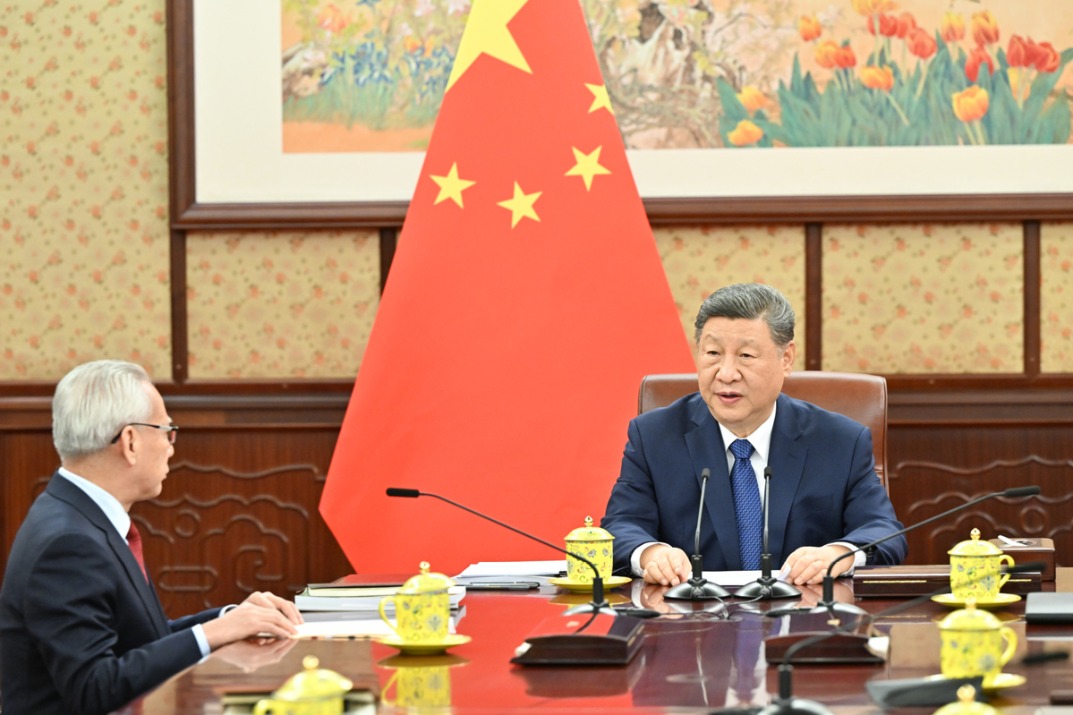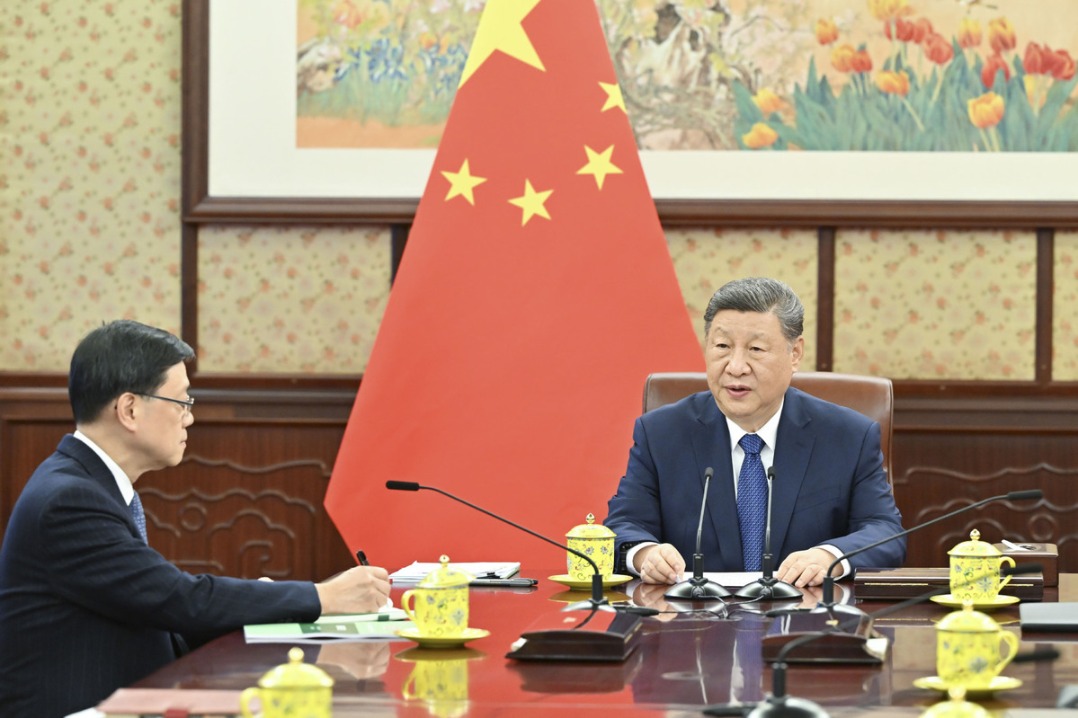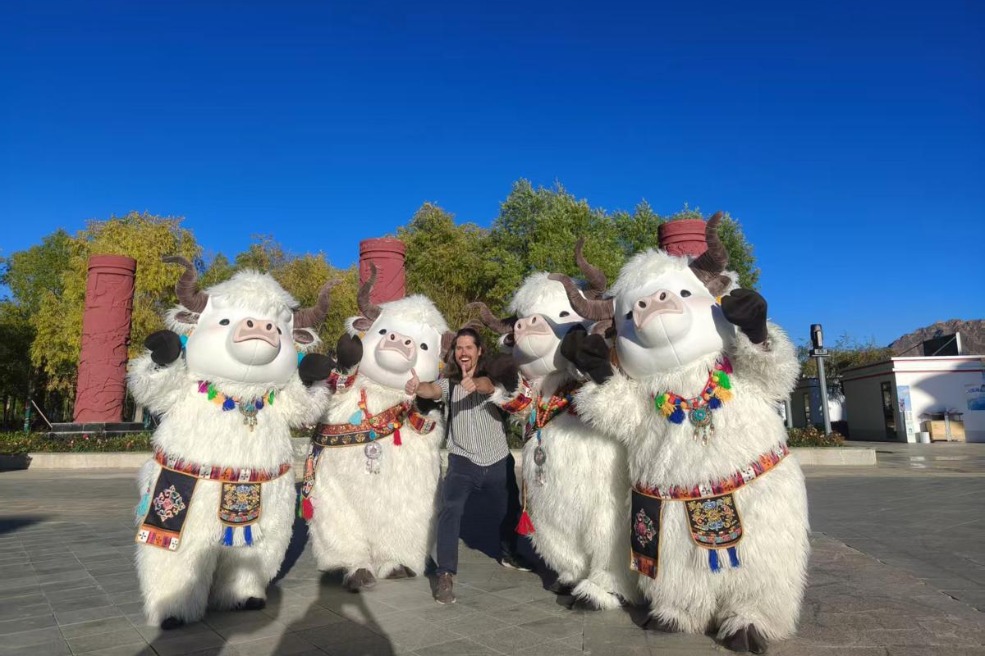Nation prospers as result of Party's vision


Evolution of xiaokang
The concept of a moderately prosperous society, known as xiaokang in Chinese, first appeared in The Book of Songs, a series of folk poems collected from around China between the 11th and sixth centuries BC.
The term describes an ideal society that is stable, affluent and secure, as desired by Chinese people for centuries. It entered politics through leader Deng Xiaoping in 1979, when Masayoshi Ohira, the Japanese prime minister, visited China.
Deng used the phrase to describe his prescription for China's modernization, which he said would be different from Japan's approach.
"Since then, xiaokang has become more frequently used in Party documents," said Liu Dongchao, a researcher on socialism with Chinese characteristics at the Party School of the CPC Central Committee.
For decades, the central authorities had promoted the development strategy called the "Four Modernizations", which referred to industry, agriculture, defense, and science and technology.
However, it faced many developmental difficulties in the 1960s and '70s, and almost 800 million Chinese remained in poverty by the late 1970s.
"Xiaokang is culturally Chinese, so it resonated more with the then-largely rural Chinese majority," said Dong, the Marxist philosophy professor, adding that the term embodies the dream of the Chinese nation and also has strong appeal in terms of both politics and civil society.
The merits of xiaokang as a political term soon led to it becoming a central plank of China's all-important "three-step" modernization plan, which was unveiled at the CPC's 13th National Congress in 1987.
Designed by Deng, the plan aimed to double GDP between 1980 and 1990; double the number again in the following decade to make China a moderately prosperous society; and see the nation become fully modernized by 2050.
At the time, China's annual GDP was the sole bench mark for tracking progress toward the building of a moderately prosperous society. However, that began to change at the start of this century, after the figure surpassed the $1 trillion mark in 1998.
At the CPC's 16th National Congress, the central authorities announced that China had hit the GDP target set by Deng's modernization plan for a moderately prosperous society. However, the development was uncomprehensive, uneven and of low quality.
As a result, the gathering called on attendees to strive for a better version of xiaokang in the first two decades of the new century, so the development benefits could be shared equally by all Chinese people.
To that end, rather than simply boosting the economy, more wide-ranging efforts would be needed. The old development model had put China on a fast track, but some growth had been achieved at the expense of the environment.
Socialist democracy, science and education, culture and civil society became added focuses, making xiaokang a multidimensional development index tracking a wide range of progress.
More recently, the focus was expanded to include targets ranging from rule of law, cultural prosperity and ecological civilization-a concept promoted by President Xi for balanced, sustainable development that highlights the harmonious coexistence of mankind and nature.
Liu, the Party school researcher, said the evolution of the definition of xiaokang is a reflection of China's fast-growing social productivity, technological prowess and public wealth.
Dong, the Marxist philosophy professor, said that even though the term "xiaokang" was used two decades ago, society was still grappling with unbalanced development and many people could only meet their basic life needs.
Considering ways to address this imbalance, Xi said: "This is a society to be enjoyed by each and every one of us. On the march toward common prosperity, no one will be left behind."
One notable endeavor of the central authorities was the detailed action plan to include everyone in the nation's fledgling social safety net, irrespective of their ethnic group or physical condition.
Du Shuangqing, a resident of Gansu province, which was once home to some of the country's poorest families, was one of the beneficiaries of the improvements.
In 1988, Du was born into a poor farming family in mountainous Longnan city. At age 9, he lost his right arm in a rockslide, which resulted in medical expenses his family was unable to meet.
The 33-year-old, who works for the local disabled people's federation, recalled wearing his two older sisters' clothes throughout primary school to reduce the financial burden on his parents.
He said he would have dropped out of school had it not been for government allowances designed to help poor students.
"Our grain harvest was usually small and my parents had too many children to support. Back then, life was really hard," he said.
























